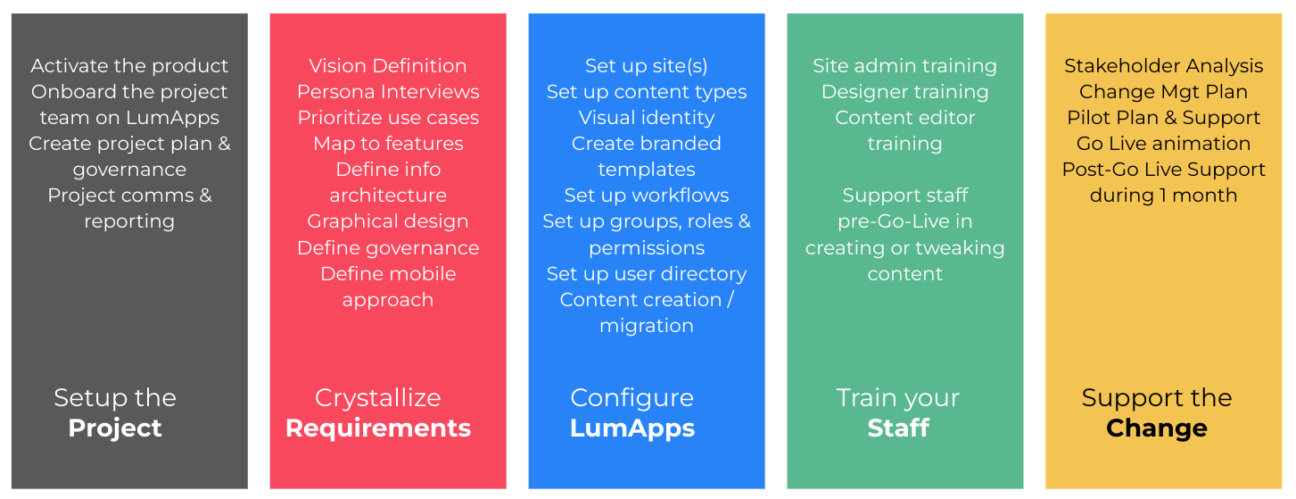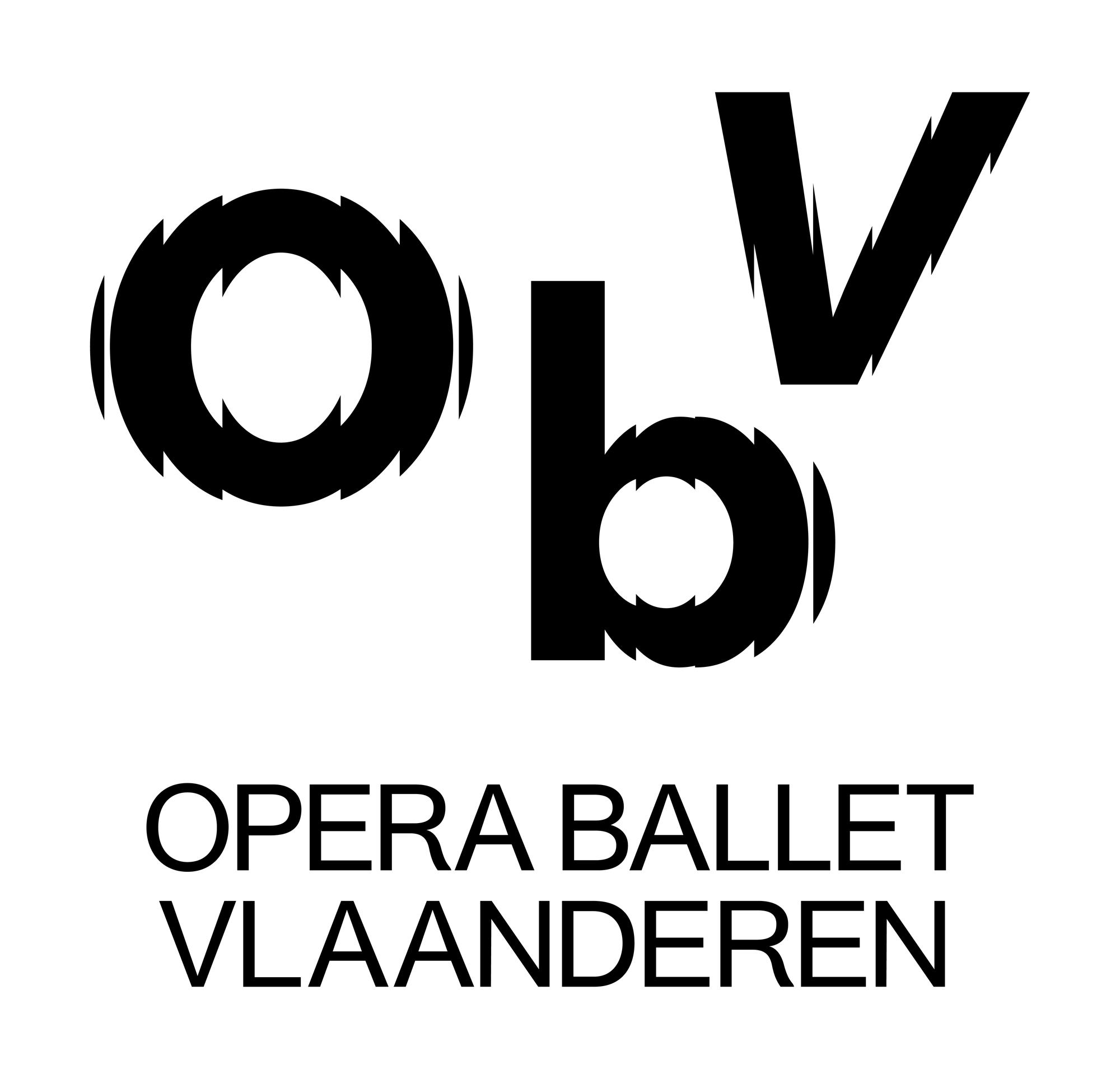About the customer
Opera Ballet Vlaanderen is the biggest player in the Flemish cultural sector, with a history that started in 1981. They produce musical, theatrical and dance performances in their three locations: Opera Antwerpen, Opera Gent and t’Eilandje (Antwerpen). They employ some 450 permanent employees, as well as a great number of artists, students and interims, bringing their number up to 900 people.
Their mission is to pioneer and inspire a wide audience, by working all together.
The Problem / Challenge
The problems encountered by OBV were the following ones:
- Employees were suffering from an overload of emails. Information flowed slowly through the company and its reach could not be measured.
- External users (namely artists and interims) were hard to reach and there was no way to know if they had received information.
- There were too many existing platforms (an existing intranet, various Google Drives, several plannings, training and HR platforms,…), each with a separate login, across which information was scattered
- A major problem was their inability to get the contact details of their colleagues in an easy way, partly because so many of them worked with OBV on a temporary basis (artists, interims, students)
- Their current intranet could only be used for top-down communication and wasn’t user-friendly. It looked & felt dated. It hosted a lot of information, but because it wasn’t targeted, people did not access relevant information easily. They could only access their intranet with an OBV google address, which meant that the artists, students, and other temporary employees were barred from that communication system.
- All this had an impact on the company culture, with a lack of oneness and connection. Employees were used to thinking in silos.
The Goal
The goal was to deploy a one-stop-shop that would serve as a single point of entry for all information, communication and access to tools. This new platform should help with the onboarding of new employees, be accessible to all OBV people regardless of their email address, and make targeted communication possible to avoid irrelevant “noise”. It was to contain an efficient user directory, containing information making it easy to find employees based on their department, their location, and even the projects they were working on.
This one-stop-shop would have to be attractive and in-house style, mobile friendly, and easy to access and use, both for the employees and the people who would manage said platform.
The Solution
We chose Lumapps because there was a good integration with the Google directory and because we could add external users so that we do not have to give all temporary employees a google account. Another important point was that we can send newsletters from Lumapps.
Hand in hand with a dedicated project team from OBV, Devoteam G Cloud deployed LumApps on their domain, using the Devoteam G Cloud methodology for LumApps deployment. This methodology includes setting up an efficient project management framework, which makes it possible to identify potential problems early enough.
This made it possible to reconsider the timeline of the project objectively and to delay it with limited impact on budget, so as to fit the human ressources on the customer’s side.
The methodology also included a thorough analysis of the customer’s needs and present situation, to determine what could be solved with the LumApps solution, what could be solved through an improvement of internal processes and what could be left as is. Part of that analysis was the creation of personas, which are representations of stereotypical users of the company and serve as benchmark and checklist throughout the project.

When decisions were made, they were immediately implemented so that the customer might see the evolution of their platform in real life and request changes if necessary.
Specific attention points were :
- External users’ access to documents hosted on Google Drive – the traditional Lumapps solution for sharing documents was not suitable for external users because of access rights to the Google Drive. It was consequently replaced by an iframe widget set up so we could offer an equivalent user experience.
- Front of House (FOH) employees with no or limited access to computers had specific needs regarding the mobile application – their needs were prioritised when building the app’s navigation.
- The information in the user directory (or “Who’s Who”) could not be entirely sourced from Google – it was set up so as to automatically retrieve and sync all business related information from the Google directory. We configured additional fields in LumApps so that the employees and collaborators could easily update their profile information themselves, such as useful skills, productions they were working on, and mobile phone.
Once the implementation of the platform was finished, our change manager organised training. The project team received extensive training enabling them to manage the platform as a whole, whereas key knowledge and information contributors received tailored training enabling them to create pages on the platform. After a content creation phase and a pilot phase, during which feedback was collected and led to additional adjustments, the platform went live, 9 months after the start of the project.
The Methodology
Our LumApps methodology consists of five parallel streams :

The big difficulty is not setting up the platform, but analysing the underlying business processes. Once that analysis is done, you see the weaknesses in the existing system: your onboarding process might not be complete, your groups management might be relying too heavily on manual work, your information management might not be streamlined enough. Ideally, you fix those first and then you start working with Lumapps. You can facilitate some things with Lumapps through workarounds, but if the underlying systems are good, it’s much less labour intensive.
The Result
Devoteam G Cloud delivered a product conform to the requirements: a platform through which all other tools could be accessed, integrated with the customer’s Google environment, user and mobile-friendly and suited for both top-down and horizontal communication. The customer’s Google environment provides part of the information shown in the user directory as well as the groups making content targeting possible.
Some interesting numbers:
- Six months after go live, 66.1% of all existing users were onboarded to the platform. This is a satisfactory number as there are many temporary accounts with limited need for the platform among the existing users.
- 99,8% of the onboarded users are active users (users who contributed, liked, commented or shared content in the last six months).
- Mobile usage (mobile responsive version + app) represents 33.7% of the connections. All communities are actively used.
Devoteam is the perfect partner to set up the system because they think very hard and include the analysis of the company. Creative solutions are then tailor-made. Also the fact that they are very accessible and very competent.
Do you want to discuss your own internal communications project with us?
Get in touch with
Inês Valadas
Supporting companies with their employee experience journey ? | engagement & retention strategy ?

